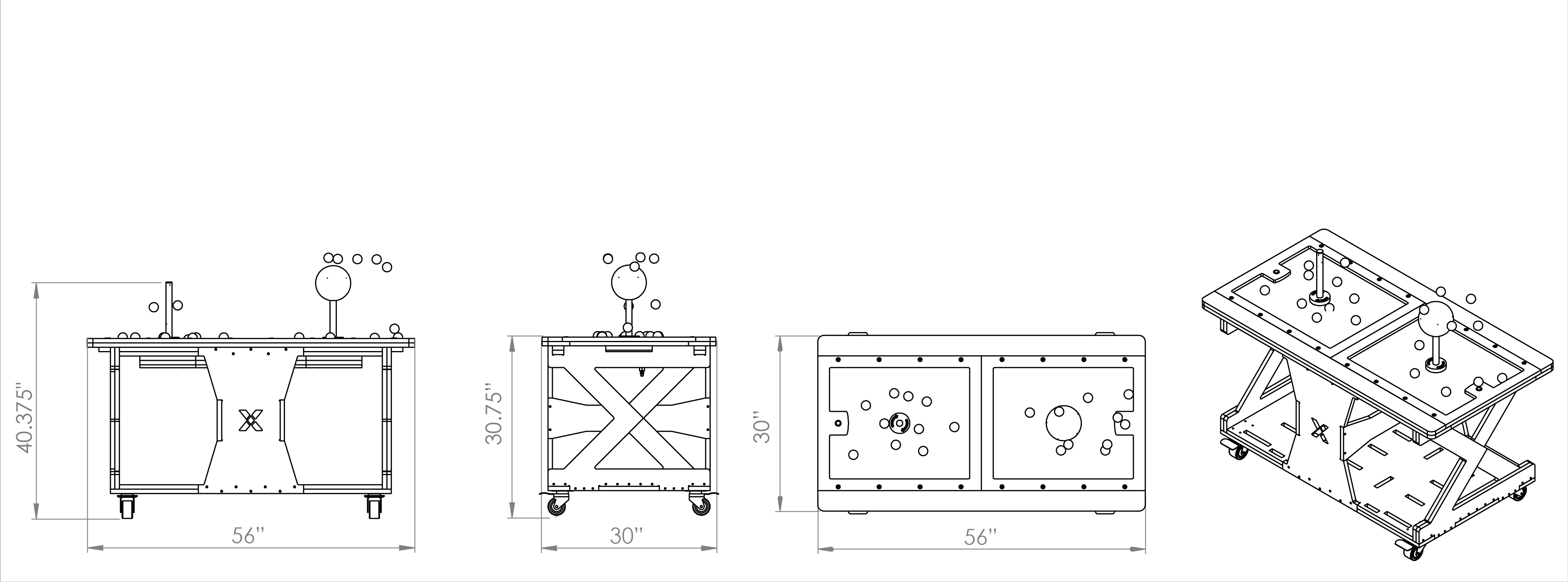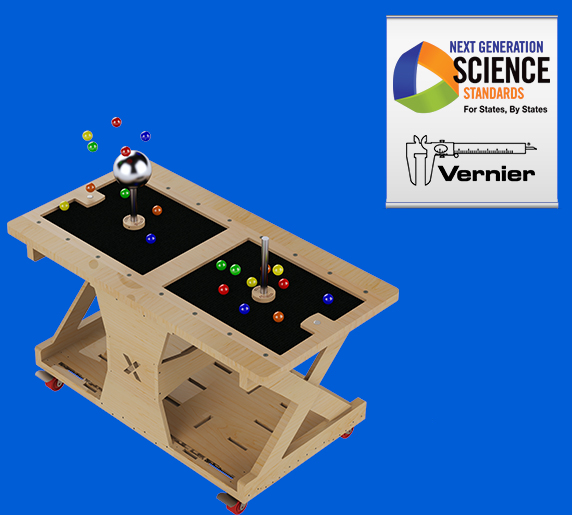STEM Concepts Learned From Use of the Bernoulli FLEXCART: Grade Bands 3-5
Phenomena of the Bernoulli Principle: Users will apply the Bernoulli Principle of flight by placing colored balls in the air stream and suspending them in air. The Bernoulli Principle states: when air flows around an object the air pressure changes as the velocity of the air changes. When air velocity increases over an object it lowers the pressure and when air moves slower over an object it raises the pressure thus causing lift.
Aviation Principles: Learning concepts such as drag, thrust, lift, weight (forces of flight) airfoil (wing design) are components that are used in conjunction with the Bernoulli Principle to achieve flight.
Exhibit Technology: Users will experience the Bernoulli Principle on interactive/exhibit technology. Through this interaction users will understand how the Bernoulli Bench acts as a model or replica of larger objects. Users will also understand the use and limitations of such technology.
Vernier Technology: Vernier sensors and probes can be added as an accessory for the measurement of real-time data.
Engineering Concepts: Users design their own airplane or aircraft for best performance. This will include analyzing data from previous tests and evaluating current aircraft designs to produce a more competitive aviation model for increased performance
Math Calculations: Bernoulli Equation; energy per unit volume before = energy per unit volume after P + (v2/2g) = constant. Drag, lift equations and graphing all results
STEM Careers associated with the Bernoulli FLEXCART:
- Aerospace Engineer
- Aerodynamics Engineer
- Fluid Dynamics Engineer
- Aeronautical Engineer
- Commercial Airline Pilot
- Flight Test Engineer
- Diagnostic Medical Sonographer
- Helicopter Pilot
- Electrical and Instrumentation Technician
(Natural Gas company, maintaining equipment for accuracy in fluid measurements in pipes)
Bernoulli FLEXCART Specs:


